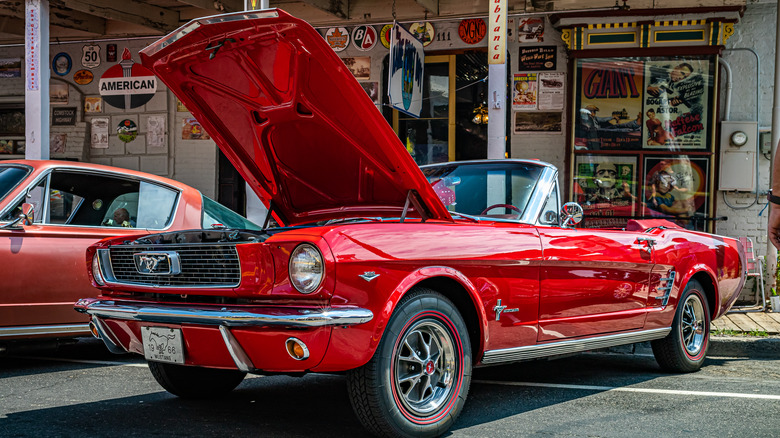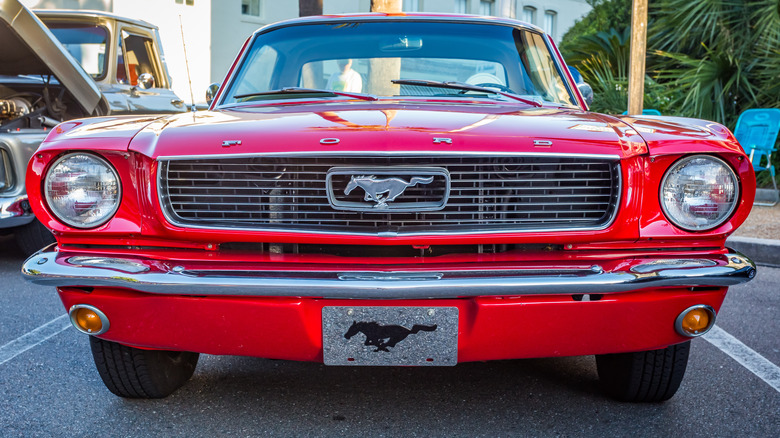
Different_brian/Getty Images
When Ford unveiled the Mustang at the April 1964 World’s Fair, it optimistically planned on selling 1000,000 units in the first year. But buyers stampeded to dealerships, driving 22,000 Mustangs off the lot on the first day it was available, according to Motor Trend. That inaugural Mustang became known as the «1964 1/2» model because of the Spring release date and came with one of three engines. The base motor was a 170-cu-in I6 that Car and Driver called «about as exciting as a dish of baby food» and produced just 101 hp.
Buyers who wanted something more substantial than strained mush could opt for one of two V8s: A 260-cu-in version that produced 164 hp, and a 210-hp, 289-cu-in small block. By the time the Mustang’s one year anniversary arrived in the Spring of 1965, more than 400,000 had been sold, and Ford had shuffled the engine offerings to nudge the Mustang closer to the fast lane.
The original I6 was replaced by a 200-cu-in version that made a more respectable 120 hp, and three versions of the 289 were available. The 2-barrel carburetor option made 200 hp, a 4-barrel boosted that output by 25 ponies, and a high-power version produced 271 hp and 312-lb-ft of torque.
The Shelby GT-350 Mustang was even more potent

Different_brian/Getty Images
For the 1966 model year, Ford added the (literally) iconic horse emblem that would go on to grace the front end of all six generations of the Mustang, and carried over the three engine options from 1965. JD Power lists the base price for the ’66 Mustang Coupe at $2,522, which equals about $24,000 today. That’s still a relative bargain, as the 2024 Mustang ranges in price from just under $31,000 with the turbocharged Eco-Boost V6 to more than $60,000 for the Dark Horse Edition.
All the 1966 Mustang’s engines were normally aspirated, as turbochargers had just come to American cars under the hoods of the 1962 Oldsmobile F-85 Jetfire and the 1963 Chevy Corvair Monza Spyder. According to Top Speed, Ford sold more than 600,000 Mustangs in 1966. Upgrading to the hi-power K-code version of the 289 cost an extra $327 (more than $2,500 today), and that added expense made the fastest Mustang a rarity back then, and a veritable unicorn today. If 271 hp and a 6.2-second zero to 60 time wasn’t enough, Ford also produced a Shelby GT-350 version, which began as a hi-po 289 Mustang but was sent to Venice, California, to be outfitted with a thirsty Holley 4-barrel carburetor and new intake manifold, upgraded cam, and free-flowing exhaust headers.
Only about 2,400 Shelby GT-350 Mustangs were built in 1966, and 1,000 of those went to Hertz to be rented to members of its Sports Car Club.